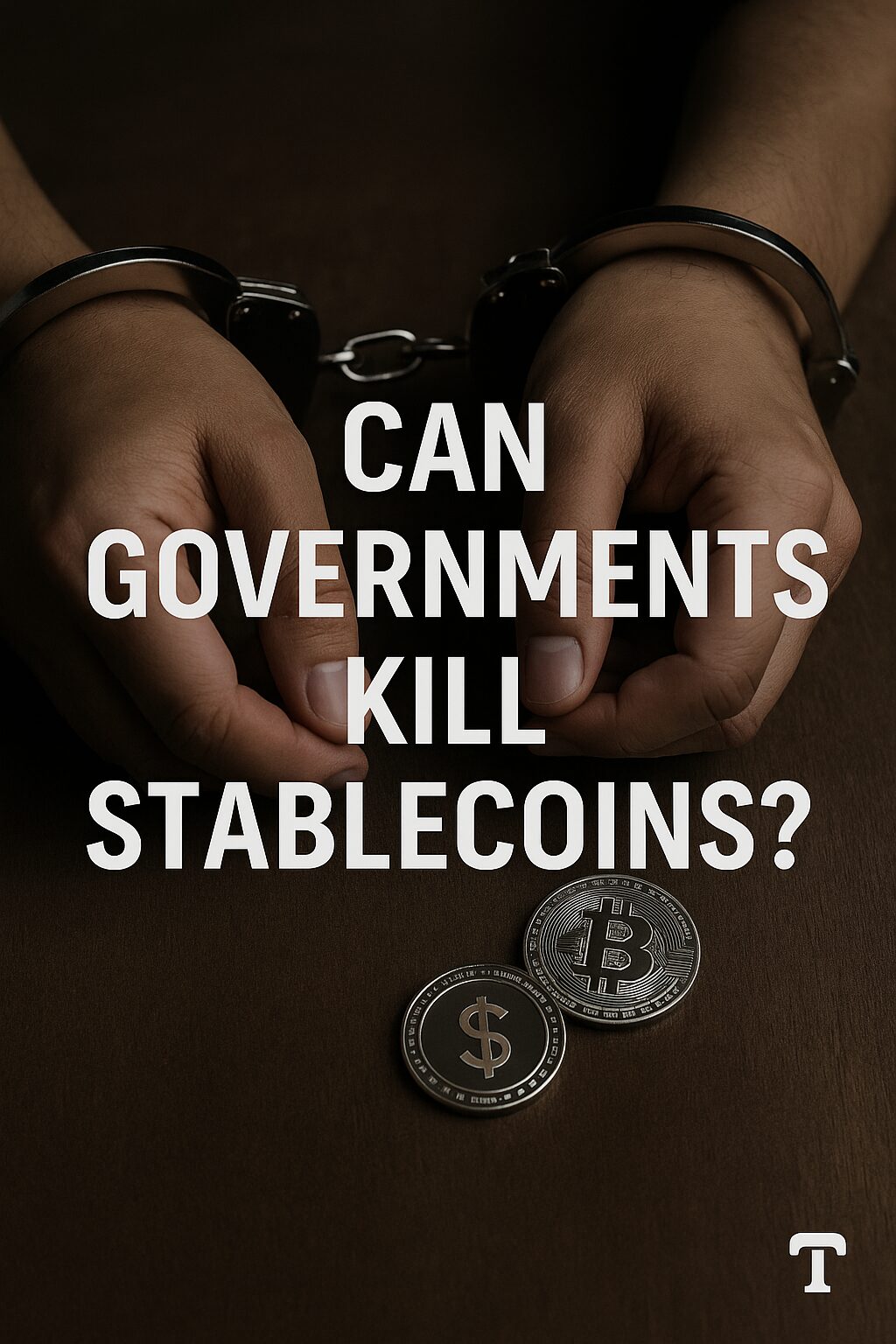Why Governments Feel Threatened by Stablecoins
Stablecoins were created to offer the best of both worlds: the stability of fiat currency and the flexibility of blockchain. But this hybrid nature is exactly why governments see them as a threat. Stablecoins bypass capital controls, enable borderless finance, and undermine central bank authority. In this post, we examine how and why governments are cracking down—and whether they can truly stop the rise of these digital dollars.
2. The Legal Status of Stablecoins Around the World
While some nations embrace stablecoins as fintech innovation, most have adopted a cautious or hostile stance.
Japan and Singapore have introduced licensing regimes.
The EU’s MiCA regulation distinguishes between different types of stablecoins.
In contrast, countries like China and Nigeria have effectively banned them altogether.
Legal clarity is rare, and the landscape shifts constantly.
3. The War on Algorithmic Stablecoins
Algorithmic stablecoins—those not backed 1:1 with fiat—have drawn particular fire from regulators.
The collapse of TerraUSD led to global panic and accelerated legislative action.
In the U.S., the “Stablecoin TRUST Act” and other proposals aim to outlaw or tightly restrict algorithmic models.
Lawmakers argue they pose systemic risk, while technologists see them as decentralized alternatives to fiat-backed tokens.
4. CBDCs vs Stablecoins: A Battle for Monetary Control
Central Bank Digital Currencies (CBDCs) are being positioned as the state-approved alternative to stablecoins. Governments see CBDCs as a way to maintain monetary control while digitizing currency. But they compete directly with stablecoins in utility and adoption. This battle isn’t just technical—it’s philosophical. Stablecoins support decentralized finance, while CBDCs reinforce centralized monetary power.
5. How the U.S., EU, and China Are Targeting Stablecoins
In the United States, stablecoin legislation is a bipartisan issue.
Bills are being introduced to require full reserve backing, audit disclosures, and limits on who can issue them.
The European Union’s MiCA framework is expected to come into full effect, enforcing strict rules around reserve assets.
Meanwhile, China has banned all crypto but is aggressively rolling out the digital yuan.
Each region is using regulation to protect its own monetary system.
6. Regulatory Tools: Bans, Licenses, and Tax Laws
Governments use a mix of hard and soft tools to restrict stablecoins.
Hard tools include outright bans, such as China’s.
Soft tools include onerous licensing regimes, excessive tax burdens, or restrictions on exchanges.
By making it legally risky or economically unattractive to hold or use stablecoins, governments can reduce adoption without resorting to censorship.
7. Legal Precedents and SEC Involvement
The U.S. Securities and Exchange Commission (SEC) has stepped in to classify some stablecoins as securities.
This creates regulatory uncertainty and opens the door to enforcement actions.
Legal precedent is being set in ongoing cases involving Paxos, Circle, and others.
The outcomes will shape the future of what kinds of stablecoins can legally exist.
8. The Role of Lobbying and Industry Pushback
Not all governments are winning the war on stablecoins.
Crypto industry groups are lobbying hard, particularly in the U.S. and Europe, to shape regulations in their favor.
Some stablecoin issuers are forming legal defense funds, while others are relocating to more favorable jurisdictions.
The tug-of-war between innovation and regulation is now a global contest.
9. Can Governments Really Shut Down Decentralized Coins?
Fully decentralized stablecoins like DAI or RAI pose a unique challenge.
Because they operate without a central issuer, it’s nearly impossible to shut them down directly.
Instead, governments may pressure the infrastructure around them—such as exchanges, wallets, oracles, and fiat on/off ramps.
But complete elimination is unlikely unless internet-level censorship is deployed.
10. Conclusion: How to Invest Safely in a Politically Hostile Environment
Stablecoins remain a valuable tool—but not without risk.
To invest safely, users must stay informed on evolving laws in their country, choose well-audited and transparent stablecoins, and avoid overreliance on any single protocol.
The stablecoin wars are far from over, and political risk must now be factored into every crypto portfolio.
11. Case Study: The TerraUSD Collapse and Its Global Ripple Effects
In May 2022, the collapse of TerraUSD (UST), once one of the largest algorithmic stablecoins, sent shockwaves through the crypto world. At its peak, UST had a market cap exceeding $18 billion. When the peg broke, it triggered a $40 billion wipeout across UST and its sister coin, LUNA. Major funds like Three Arrows Capital were impacted, leading to insolvency and cascading failures across DeFi platforms like Anchor and centralized entities like Celsius and Voyager. This was a pivotal moment for regulators, who now cite UST’s downfall in every stablecoin hearing.
12. The Rise of Regulatory Sandboxes and Safe Havens
While many countries are cracking down, others are embracing regulatory innovation. The UK, Bermuda, and Switzerland are developing “crypto sandboxes,” allowing stablecoin experimentation under supervision.
This dual-speed regulatory environment creates legal arbitrage opportunities.
Issuers who feel pressure in the U.S. are migrating to crypto-friendly jurisdictions—taking innovation and jobs with them.
It’s a global chess match between caution and competitiveness.
13. Stablecoins and Cross-Border Remittances: A Geopolitical Threat?
Stablecoins have quietly become a critical tool for remittances, especially in regions like Sub-Saharan Africa, Latin America, and Southeast Asia.
They bypass high fees charged by services like Western Union and avoid volatile local currencies.
But this success threatens the ability of governments and banks to control capital flows.
Nigeria and Argentina, for example, have cracked down on crypto remittances, fearing capital flight and dollarization.
14. Technology Arms Race: How Code Is Becoming Law
New-generation stablecoins are being engineered to be legally unkillable.
Innovations include multi-chain issuance, oracle decentralization, collateral transparency via real-time audits, and smart contract upgradability.
Legal firewalls are being coded into protocols to make it difficult for any single government to intervene.
The phrase “code is law” is becoming more literal, as developers race to outmaneuver regulation with tech design.
